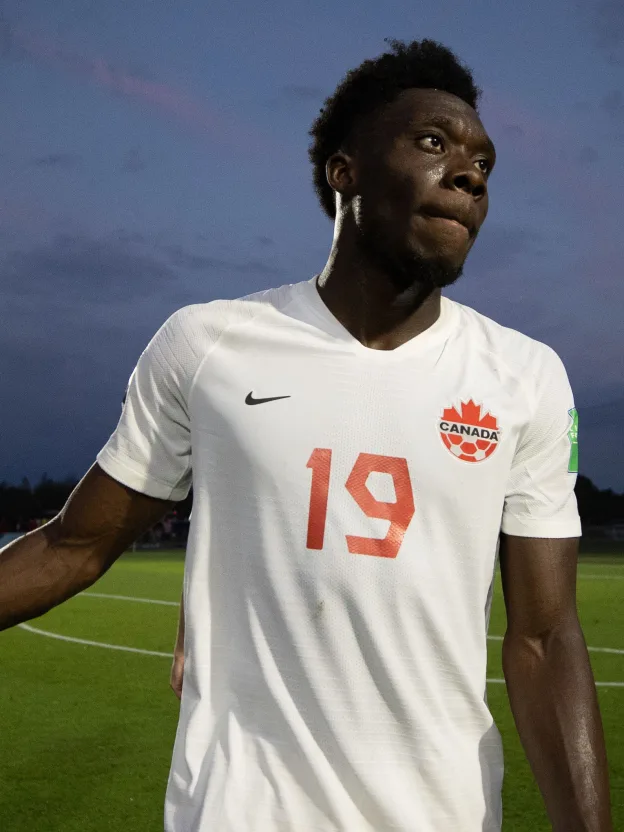For a while there, it didn’t seem like this day would come, but we’re officially through with the first window of Canada’s road to the 2022 FIFA World Cup. The men’s national team, with comfortable wins against Bermuda (5-1) and the Cayman Islands (11-0) now under their belts, has cleared the first (read: lowest) hurdle on the way to a place in Qatar, with quite a long road still ahead. It had been well over a year since we’d seen anything even resembling a full-strength men’s team in action, with the most recent competitive match being a 4-1 loss to the United States in November 2019. So, in a manner akin to blowing off cobwebs with a stick of dynamite, John Herdman’s Canada returned with gusto this past week. We’re now left with just over two months to wait before we seem them again, when they’ll finish off their first round of World Cup qualifiers against Aruba and Suriname in early June. Until then, though, what else can we do but dissect the two games we just saw? Strength of opposition aside, there’s plenty to talk about after a pair of dominant victories with almost completely different starting lineups. Here are just four of the myriad things we learned from this Canadian men’s team camp.
RELATED READING: Canada in Concacaf Olympic qualifying: 4 things we learned
1. We’re gonna need more adjectives for Alphonso Davies
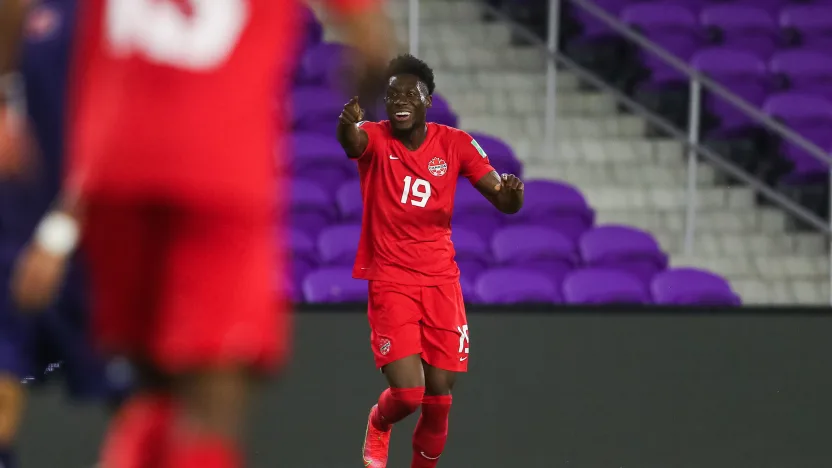
Seriously, we’ve run out of ways to describe him. The Bayern Munich fullback was an absolute superstar through the two games — of which, it must be added, he played all 180 minutes, possibly to the chagrin of Hansi Flick. As has been pointed out more than enough times, this was our first glimpse of him in a Canada jersey since his supernova explosion onto the global football stage in 2020 with Bayern Munich. He was worth every penny of the price of admission. Canada’s men’s team has probably never had a player quite like Davies, whose phenomenal skill and supreme likeability intersect with raw star-power and confidence. Davies was trying things against Bermuda and the Caymans that many of his teammates may not even have attempted in training, and he was pulling them off more often than not. It wasn’t just Davies’ well-known speed on display; he was a complete, well-rounded attacking talisman. Refreshingly, Herdman seemed to have given Davies a license to roam pretty much wherever he wanted in the attack, knowing that Canada wouldn’t likely be challenged too much on the back end (and if they were, well — that’s where the world-class speed comes in handy). On top of a few of his trademark rocket-ship runs down the flank, Davies was playing quick give-and-go passes with players in midfield, and drifting around the top of the box for scoring opportunities after moving the ball onward. He won’t be given that much freedom in games against top Concacaf opponents, but setting the superstar loose in games like these is, if nothing else, extremely fun. Davies’ commitment to Les Rouges was very evident as well, in no small part based on his willingness to play all 180 minutes of two utter blowouts. In the Bermuda game especially, Davies was at the head of almost every attacking move, and he was keen on taking every set-piece. Put simply, Davies was the best player on the pitch (a fact he well knew), and he insisted on making the most of that. Fans of Canadian soccer: Do not, under any circumstances, ever take this player for granted, or pass up an opportunity to see him play for his country.
2. Midfield a real area of strength for Canada
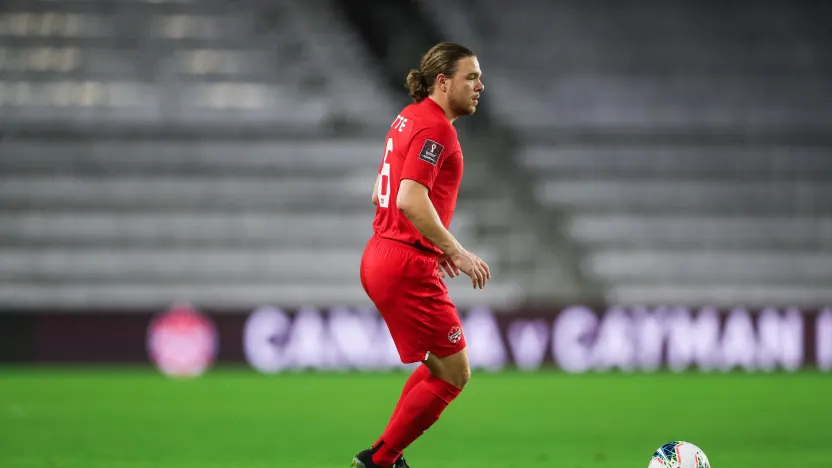
We probably already knew that, but it became clearer at this camp. With a midfield group that featured Atiba Hutchinson, Samuel Piette, Stephen Eustáquio, Mark-Anthony Kaye, and David Wotherspoon, Canada was absurdly deep in the middle — and that’s even without Jonathan Osorio or Scott Arfield, two players who started both games against the U.S. in late 2019. This is probably the strongest midfield group Canada has had in years, with some younger players developing into rock-solid options and veterans showing signs of resurgence. Canada’s midfield would have looked pretty good even before Hutchinson returned to the fold. Canada wasn’t challenged too much in midfield by Bermuda or the Cayman Islands, but they did have to contend — especially early in the Bermuda game — with some spirited pressing. Although a lot of the attacking came from out wide, players such as Kaye and Wotherspoon in particular were very involved in playing between lines. Canada won’t usually be able to pinball between the wings and central players as much as they did in these matches, but they did seem to be consciously trying to advance the ball in a variety of different ways in order to expand the tactical toolbox. If Herdman was faced with a World Cup qualifier against the United States tomorrow, it’s hard to decide who might start in midfield, although the lineup for the Bermuda game feels a lot closer to first-choice than the Caymans. Hutchinson and Eustáquio are likely penciled into the best 11 (assuming Atiba is, indeed, there, which we can’t take for granted), and in a game against a more threatening opponent you’d probably want one more body in central midfield — probably Kaye for his attacking upside, or Piette if you want to press. When Canada beat the U.S. in October 2019, their tenacity to win balls in midfield was perhaps the greatest reason behind their success. Having so many options bodes well for Canada’s Gold Cup fortunes as well; with World Cup qualifying the obvious priority, there may be some extra starting minutes available in the summer for the likes of Wotherspoon (or someone like Liam Fraser or even Michael Baldisimo and Lucas Dias).
3. Youngsters earning more serious consideration
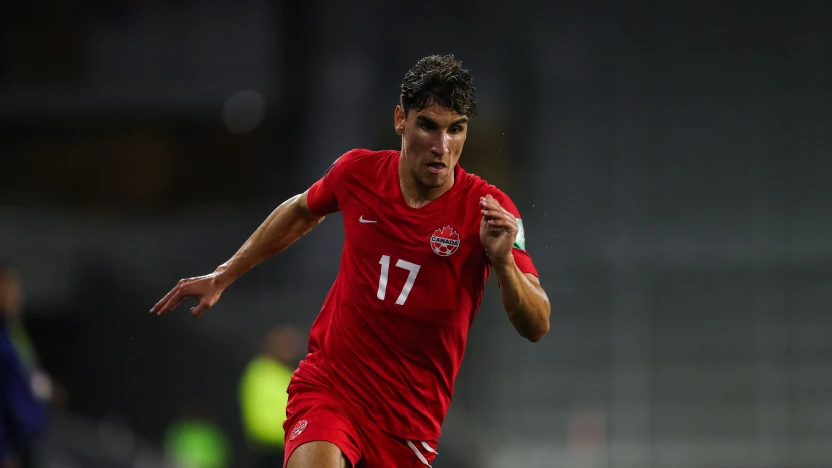
The fact that Theo Corbeanu was included in this camp was, for most fans, an interesting side-plot. The same is probably, even more so, true of Frank Sturing and Alistair Johnston. Getting young players involved was expected to be more about laying foundations for the future than creating real selection headaches almost immediately. Yet, there’s no denying that Corbeanu, in particular, put himself on the map more firmly than anybody could’ve hoped. Having played so well in his brief introduction to Les Rouges, the Wolverhampton Wanderers attacker might have forced Herdman’s hand into calling him into future camps for more difficult matches. Johnston, as well, has given Canada some unexpected depth at the right-back position, and given Herdman more leeway to experiment with Richie Laryea’s role. It’s hard to pass judgement on Sturing, considering the limited defending Canada actually had to do, but he was always keen to be involved on set-pieces and slow-burn attacking moves. He’s a great player to have available in a centre-back position that this side has been thin at in recent years. This is all not to say that Corbeanu is likely to start for Canada in major qualifiers this year (although we can’t rule it out), but rather that he’s played well enough to be considered much more seriously for those games than he might’ve been previously. The way he linked up with Davies, especially — the two of them looking like the most confident players on the pitch — should be food for thought.
4. Can’t draw conclusions about the defence yet
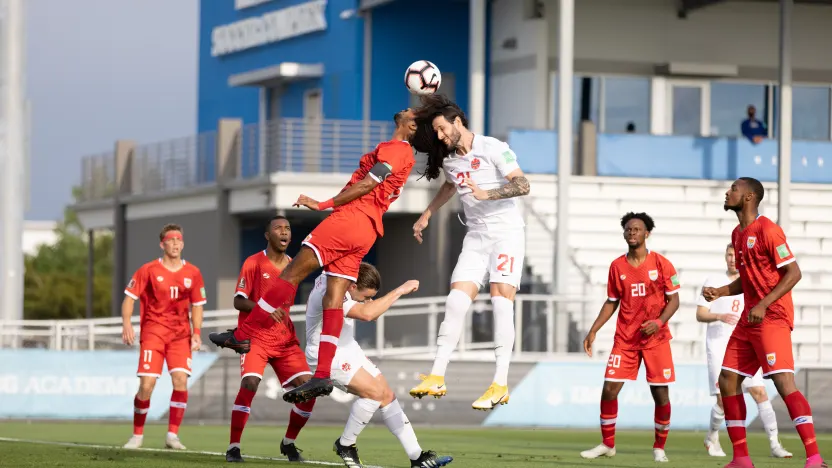
Over the course of two games, Canada faced just four shots (all of them by Bermuda). Their average of 75 per cent possession gets credit for that; very rarely did Bermuda or the Cayman Islands even touch the ball, let alone in the Canadian half. Herdman deployed two entirely different backlines in these games, with Steven Vitória and Kamal Miller starting in the (ostensibly) stronger 11 versus Bermuda, followed by Frank Sturing and Ricardo Ferreira making their debuts together against the Caymans. Neither of those pairings ever had much to do defensively, with their responsibilities mostly limited to helping play out of the back and drifting around the top of the box for the odd loose ball. Honestly, at this point it’s still impossible to say what Canada’s best defensive setup is, with none of them having truly been tested at this camp. Both Bermuda and the Caymans did come forward with counter attacks a couple times, but stopping those was an exercise in pace rather than real defensive acumen. Ferreira did make one impressive tackle late in the Cayman game, and a few other defenders pulled out flashy slides to cut off opponents, but they weren’t challenged all that much — Bermuda’s goal was more of a goalkeeping error from Milan Borjan than anything. Canada doesn’t have a sterling defensive record against top teams in the past few years, with poor performances against Mexico, Haiti, and the United States coming to mind. Some of the defensive group from this camp wasn’t even there for any of those, but until proven otherwise it remains an unsolved question.
